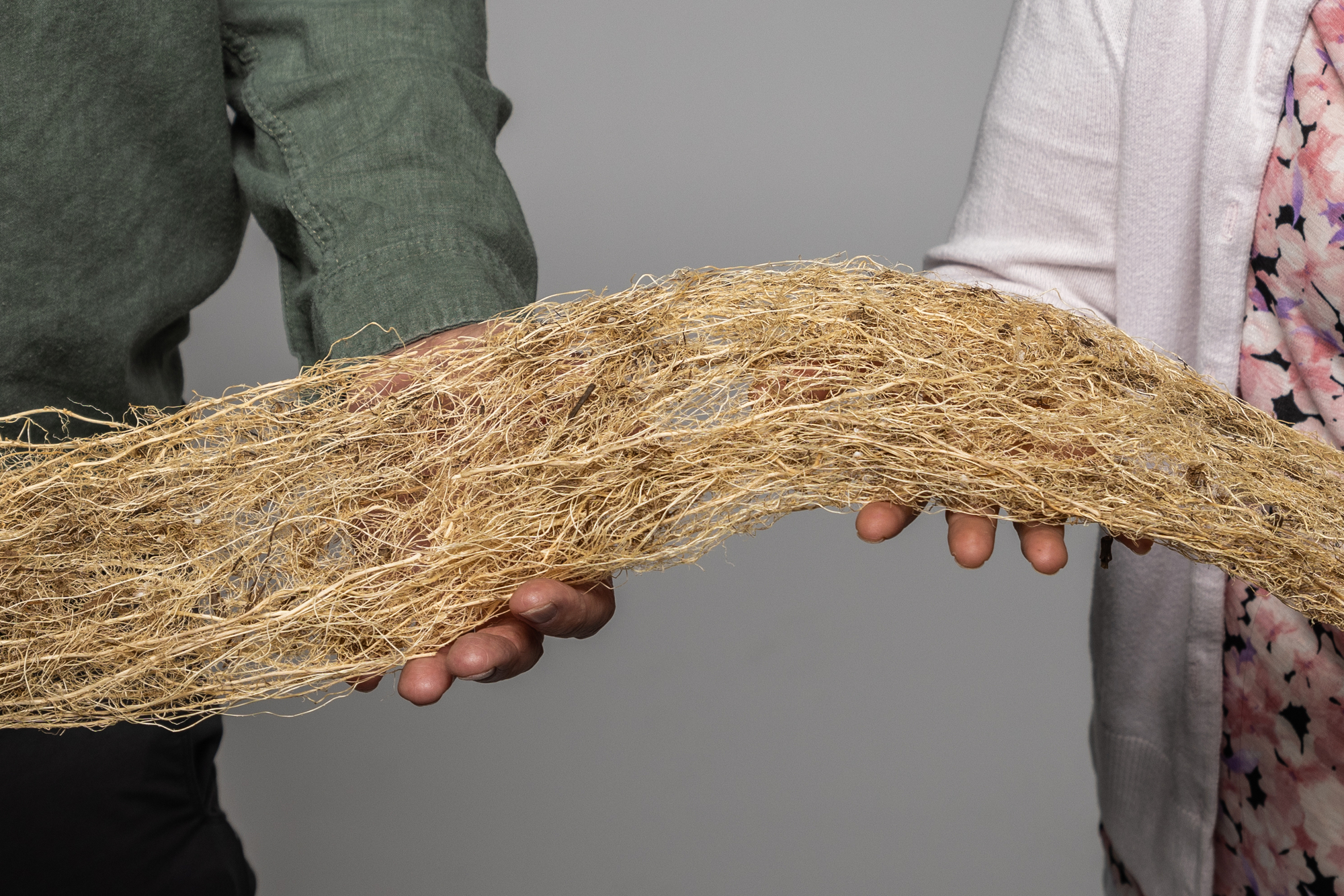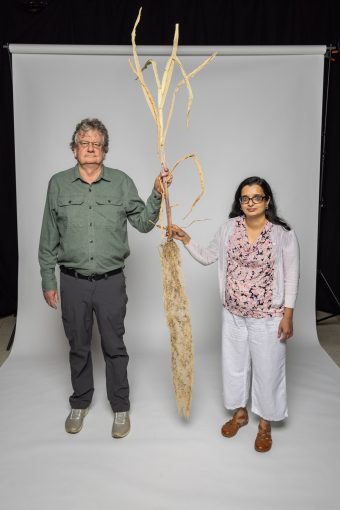Columbia, Missouri, USA
September 18, 2024
In a recent centennial review article for the American Society of Plant Biologists, Mizzou scientist Robert Sharp and team summarize key advances in the understanding of root growth under drought conditions.
 The root system of a young maize plant. - Photos by Abbie Lankitus
The root system of a young maize plant. - Photos by Abbie Lankitus
Corn fields are the icebergs of solid ground — there’s more below the surface than meets the eye. That’s why plant root systems are often referred to as the “hidden half” of the plant. Despite the challenges of studying how roots of corn and other plants develop and function underground, the past century has seen increasingly intensive research on root biology. University of Missouri plant biologist Robert Sharp has spent his career extending that knowledge to new depths by helping to understand how roots keep plants alive and thriving when water is limited.
Sharp moved to the U.S. from his home in England to study with leading plant scientists and joined Mizzou’s faculty in 1986. “I knew Mizzou had one of the best plant biology programs in the world,” said Sharp, now a Curators’ Distinguished Professor Emeritus in the College of Agriculture, Food and Natural Resources.
Because of his extensive knowledge of root biology, Sharp was invited to review key research from the past 100 years on how plant roots continue to grow under drought conditions, contributing to a special issue of The Plant Cell commemorating the centennial of the American Society of Plant Biologists.
Rooting around for answers
The architecture of a plant’s root system is complex, and scientists are still learning the intricacies of root development and function.
“Root systems are composed of many thousands of roots that form networks extending deep into the soil,” Sharp said. “From detecting and seeking out water and nutrients to maintaining the strong foundation plant shoots depend on to grow upward, roots play a vital role in a plant’s growth and survival.”
 Robert Sharp and Priya Voothuluru
Robert Sharp and Priya Voothuluru
In their review, Sharp and his colleagues, Priya Voothuluru (Mizzou) and Yajun Wu (South Dakota State University), who both studied in Sharp’s lab, feature several founding discoveries in root growth and development under drought conditions that have shaped current knowledge and will ultimately help lead to the development of more drought-tolerant crops for farmers.
Key discoveries include:
- Root/shoot growth ratio: When soil water supplies are limited, Sharp explained, one major change typically ensues in the plant: While shoot growth slows, the roots continue to lengthen. This allows the plant to persist in its search for water while conserving energy and resources.
- Cell expansion: By enhancing the processes that plants use to grow their tissues (cell expansion), roots show formidable resilience under drought conditions, Sharp said. In some cases, root cells loosen their walls through specialized metabolic functions that allow expansion to continue despite tissue dehydration.
- Osmotic adjustment: Another major advance — a discovery from the 1970s — is what’s known as osmotic adjustment. This occurs when a plant cell accumulates sugars, amino acids and other solutes that pull water back into the cells to restore their hydration. Sharp’s studies have shown that roots have a greater ability for this response than leaves.
- Hydrotropism: In addition to the mechanisms that enable roots to keep growing when water availability is limited, roots can sense where water is and grow toward it, a process termed hydrotropism.
- Growth-regulating hormones: Like animals, plants have a range of hormones that regulate their development. Sharp’s research in the 1990s discovered that accumulation of one particular hormone, abscisic acid (ABA), is essential to maintain root growth in developing corn seedlings under drought conditions.
“Drought is recognized as the most damaging environmental factor for crop production worldwide,” Sharp said. “It’s a global problem, and in Missouri, most years somewhere in the state experiences severe drought conditions, so research on root development and function is vital to help farmers prepare for and recover from droughts.”
Stewards of the science

Mizzou’s campus is recognized for interdisciplinary research collaboration. In the plant biology area, this is something Sharp attributes to the success of the Interdisciplinary Plant Group (IPG), an organization that spans multiple departments and that Sharp led as its director for a decade.
“Mizzou probably has more expertise in root biology than you’ll find anywhere else in the U.S.,” Sharp said. “In 2021, we hosted the 11th Symposium of the International Society of Root Research. Even though it ended up being virtual because of the coronavirus pandemic, the meeting was a tremendous success with over 700 participants from 52 countries. The IPG promotes interdisciplinary collaboration and expands our relationships, which is greatly beneficial in furthering our research.”
For Voothuluru, who received her doctorate under Sharp’s tutelage in 2012, the IPG was a major factor in selecting Mizzou for her studies.
“Although I was in a plant physiology lab, I became an expert in molecular biology, biochemistry and microscopy,” Voothuluru said.
She recently returned to Mizzou to continue her research on root biology. “One of the reasons I chose Mizzou was because I wanted to pursue important questions that can be addressed with cutting-edge collaborative research. I knew I could bring creativity into my research here because I was supported by my colleagues and the university’s ample resources.”
In reviewing a century of growth in this field, Sharp and his colleagues are helping to prepare future researchers for the next 100 years of innovation in root biology research with impacts in Missouri and beyond.
“Not so hidden anymore: Advances and challenges in understanding root growth under water deficits” was published in The Plant Cell.